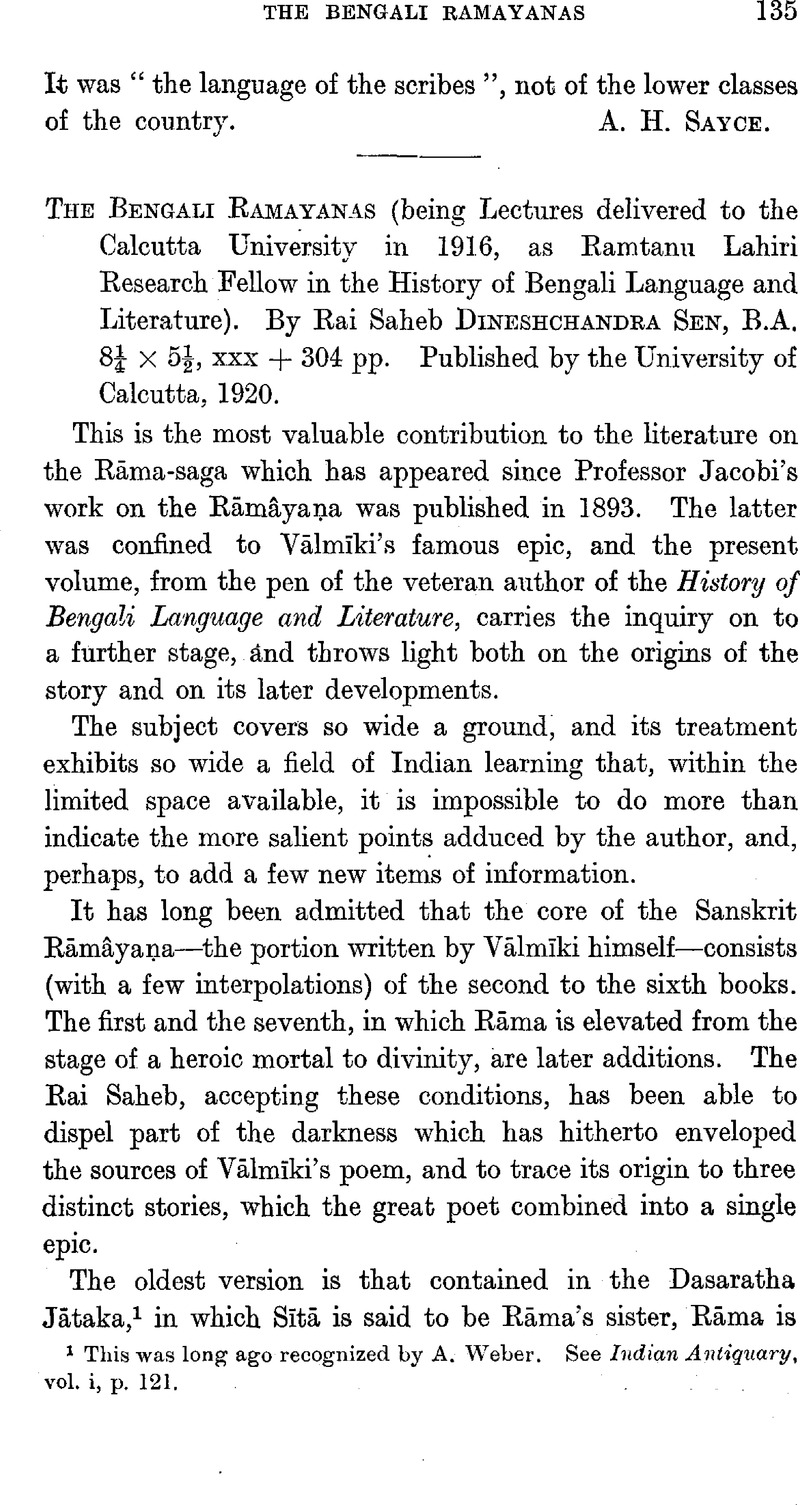No CrossRef data available.
Published online by Cambridge University Press: 15 March 2011

page 135 note 1 This was long ago recognized by Weber, A.. See Indian Antiquary, vol. i, p. 121.Google Scholar
page 136 note 1 We find much of this in that portion of the Uttara Kāṇḍa which Jacobi calls the Rāvaṇeïs.
page 136 note 2 Numerous temples in Southern India are said to have been founded by Rāvaṇa (see Bombay Gazetteer, I, i, 190, 454Google Scholar n. 1; XV, ii, 76, 290ff., 341). He is said to have performed his celebrated austerities at Gōkarna, in Kanara (Bombay Presidency), a district which abounds in legends about him. Some of these have spread to very distant parts of India. For instance, the story of the loan to him of Siva's “self-liṅga” (Gaz. XV, 290) reappears in the Kāshmīrī Rāmâyaṇa.
page 137 note 1 Vide JRAS., 1921, p. 422. This story appears to have been widely spread. It is popular in Kashmir. According to the Jaina, Uttara PurāṇaGoogle Scholar, quoted by our author, she was a daughter of Rāvaṇa himself.
page 137 note 2 The Bengali version of the conversion of the hunter Vālmīki is worth noting for the light it throws on the connexion of Bengali with Māgadhī Prakrit. Nārada tried to teach him to pronounce Rāma's name, but he could not do so, owing to sin having paralysed his tongue. Nārada succeeded in getting him to say maḍā, (pronounced maṛā), meaning “dead”. This is the Māgadhī Prakrit, maḍa- (Vr. xi, 15).Google Scholar It is peculiar to the Bengali language, the more western word being marā. Nārada next got him to use this western pronunciation, and to repeat the word rapidly several times,—thus, marāmarāmarāmarā. It will be seen that in this way Vālmīki, without his paralysed tongue knowing it, uttered the word Rāma, and thus became sufficiently holy to become converted. A propos of the bhakti influence, on page 127, there is a story about Ni![]() āmu'd-dīn Auliā and a robber, which recalls the finale of the Tannhäuser legend. The robber is told that he cannot hope for forgiveness till a certain dead tree bears leaves. In process of time he does feel true repentance, and the dead trunk becomes at once covered with green leaves from top to bottom.
āmu'd-dīn Auliā and a robber, which recalls the finale of the Tannhäuser legend. The robber is told that he cannot hope for forgiveness till a certain dead tree bears leaves. In process of time he does feel true repentance, and the dead trunk becomes at once covered with green leaves from top to bottom.